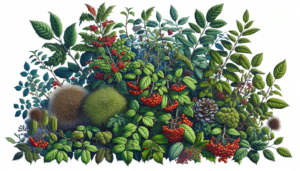The news that scientists are planning to bring back woolly mammoths to the Arctic tundra, by splicing DNA from Asian elephants with that of their extinct ancestors, has raised a few eyebrows in the world of conservation science.
However, the basic idea of reintroducing large mammals to a vulnerable ecosystem in order to restore and rebalance habitats depleted by our own destructive habits is now widely accepted.

When we take big, influential creatures out of an ecosystem, we create an imbalance that allows the populations of other species to increase rapidly. For example, because bears, wolves and lynx have long been extinct in Britain, the numbers of native red and roe deer, and the non-native muntjac, have skyrocketed. This creates soil erosion and damage to woodlands and scrub, affecting scarce and specialised species such as the nightingale, and reducing new tree growth.
In extreme cases, the effects of losing just one keystone species can be disastrous. As Raquel Filgueiras of Rewilding Europe explains, when they disappear, other species are simply not able to take over their role. As a result, she says, “ecosystems then degrade, and sometimes completely collapse”.
The converse is also true. When we put these key species back into a broken ecosystem, we start to restore the balance between predators and prey, and change the composition of the local flora. While species reintroduction is not a magic wand that can solve every problem, it can certainly help reverse losses.
Perhaps the best-known example is the reintroduction of wolves to Yellowstone national park in the US after an absence of almost 70 years. The idea was that the wolves would keep the elk population in check, preventing overgrazing. Ultimately, this would recreate a more diverse and complex habitat, in what scientists call a “trophic cascade”.
The plan was hugely controversial at the start, but 25 years later it has clearly worked, with Yellowstone having a far richer and better-balanced ecosystem than before. Revenue from wildlife tourism has more than covered the scheme’s costs.
On a smaller scale, the presence of predatory birds such as goshawks and white-tailed and golden eagles has a similarly beneficial effect by reducing the numbers of medium-sized predators.
Benedict Macdonald, the author of the book Rebirding, has long championed schemes to restore Britain’s lost or returning wild creatures. In his forthcoming book, Cornerstones, which examines the impact of keystone species, he points out the benefits of the return to the New Forest of one of our most charismatic raptors.
“Goshawks prey on medium-sized predators such as magpies, jays and crows, which raid songbirds’ nests for eggs and chicks. Keeping their numbers down allows those smaller birds to thrive.” Beneficiaries include red list species such as the hawfinch, mistle thrush and spotted flycatcher, which currently need all the help they can get.
Perhaps the best-known keystone species is neither a predator nor a huge herbivore, but a rodent. Beavers – rightly known as “nature’s architects” – can transform a wetland ecosystem in a remarkably short time by damming a stream or river, adding levels of complexity. This allows a huge range of species – including the kingfisher, willow tit, otter, water vole, and damselflies and dragonflies – to thrive.
There is, however, always opposition to these reintroductions, particularly from farmers and landowners. The argument over wolves is perhaps not so surprising, but even beavers have proved to be controversial: some farmers claim the dams lead to flooding in their fields.
And although it’s a beautiful idea, it’s impossible to know at present exactly what impact the reintroduction of mammoths to the Siberian steppes would have. Would it have the dramatic restorative effect that the project is hoping for? It will be very interesting to find out.



